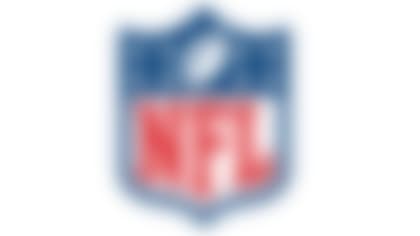When USC Trojans quarterback Matt Barkley faltered on the national stage against the Stanford Cardinal, he not only lost his foothold on the Heisman Trophy, but he also opened the door for another quarterback to potentially overtake him as the presumptive No. 1 pick in the 2013 NFL Draft.
With West Virginia's Geno Smith riding a wave of momentum following his spectacular performance (45-for-51 for 656 yards and eight touchdowns) in a thrilling, 70-63 win over Baylor, scouts around the NFL are reconsidering their thoughts about which player is the top quarterback in college football.
After digging into the coaches tape to study their respective games, here is my take on the burgeoning Barkley-Smith debate:
Arm talent
Barkley is an outstanding prospect with all of the intangibles that you expect in an elite quarterback. However, he doesn't possess superior physical tools for the position. Barkley displays only adequate arm strength and fails to consistently deliver passes with superb zip or velocity. Although he is certainly capable of making all of the throws in most pro playbooks, it is a byproduct of timing, rather than pure arm talent.
For Barkley to be successful as a pro, he will have to get the ball out of his hand quickly and rely on his remarkable ability to anticipate open windows in the intermediate areas of the field. Matt Ryan has enjoyed tremendous success utilizing that approach, so it is not a stretch for Barkley to play at a high level, despite his arm deficiencies.
Smith has one of the strongest arms in college football. He can make all of the throws with zip and velocity and has shown extraordinary improvement with his accuracy and ball placement. As I've studied the Mountaineers over the first few weeks of the season, I've been impressed with his ability to connect on intermediate and deep throws. Smith routinely pushes the ball down the field on vertical throws to the perimeter, but is also a pinpoint passer on routes in the 10- to 20-yard range.
In addition, Smith has shown excellent anticipation and touch by consistently leading receivers into open areas with his throws. He routinely hits Stedman Bailey and Tavon Austin in stride, allowing them to utilize their superior speed and quickness in space. With most NFL offenses featuring a mix of vertical passing plays and crossing-route combinations that require superb accuracy, ball placement and touch, Smith could be a good fit in any system.
Advantage: Smith
Mobility
Barkley will not win many athletic competitions, but he is a nimble athlete within the pocket. He slips and slides into open areas within a collapsing pocket and finds a way to deliver passes from awkward positions. Although the recent trend of athletic quarterbacks making plays with their feet has led NFL evaluators to covet dual-threat playmakers, Barkley's ability to maneuver within the pocket is good enough for him to succeed in a traditional offense.
Barkley has also shown the ability to consistently make throws on movement-based passes like bootlegs. He quickly gets into a throwing position while on the move and delivers the ball accurately to the flat or the crossing route on the second level. This bodes well for his chances to play within a West Coast system like the one employed by the Houston Texans, which features a variety of movement-based elements.
Smith is a not an explosive athlete in the mold of Robert Griffin III or Cam Newton, but he has enough agility to make plays within the pocket or on the move. While the majority of his positive plays are made with his arm, he has shown the ability to extend plays with his feet by selectively scrambling when the pocket collapses.
As a passer on the move, Smith is comfortable rolling to either side and can deliver a pinpoint strike off a bootleg. He has showcased vast improvement with his ball placement and touch when throwing from unorthodox positions, which suggests he is more than capable of succeeding in a system that features a variety of movement-based throws.
Advantage: Smith
Game management
Barkley is one of the best quarterbacks in recent college history at managing the pre-snap responsibilities at the line. He routinely gets the Trojans into the correct call based on the defensive front or coverage, and shows an uncanny knack for exploiting the vulnerable area of the defense. At USC, he directs an offensive system that is similar to the majority of schemes run in the NFL. Most importantly, he has a teacher with legitimate NFL experience as a play caller in Lane Kiffin. Consequently, he will enter the NFL well-prepared for the mental aspects of the game, which should allow him to get on the field early in his career and enjoy some success based on his extensive game experience as a four-year starter.
From a playing standpoint, Barkley certainly understands how to manage the game as the quarterback. He exploits favorable matchups on the perimeter and isn't afraid to repeatedly target Robert Woods and Marqise Lee, taking full advantage of their superior skills. Although his tendency to feed his top playmakers has led to some contested throws and interceptions, Barkley typically makes sound decisions from the pocket and rarely puts the ball in harm's way.
Smith has shown outstanding game-management skills since stepping into the starting role a couple seasons ago, but he has taken it to another level in 2012. Smith has the Mountaineers' offense humming efficiently as the catalyst. Smith is completing 83.4 percent of his passes, while compiling an unbelievable 208.4 college passer rating. He has thrown 20 touchdown passes on 169 passing attempts ... and has yet to throw an interception. That's unheard of efficiency at the position, and suggests he has complete mastery of Dana Holgorsen's offensive system.
While some scouts will certainly assume the Mountaineers' spread offense is simplistic in nature, a close examination of the scheme reveals that Smith has a number of reads and responsibilities. Smith comes to the line with multiple options within each play before making a decision based on the defensive front or coverage. He counts the number of defenders in the box, and if there are too many players near the line on a running play, he'll opt for a bubble screen instead. In addition, he will hit the "hot read" or sight adjustment against blitz pressures to exploit vulnerable areas of coverage. With more NFL teams adopting collegiate offensive tactics, Smith should be fine adjusting to play at the next level.
Advantage: Barkley
Clutch factor
For all of the traits that scouts look for in potential franchise quarterbacks, it is the ability to perform under pressure that carries the most weight in the final evaluation. How well a quarterback plays with the game on the line is typically the deciding factor in a debate between closely graded prospects.
Barkley, who sports a 30-10 record as a four-year starter, has typically played well in the Trojans' biggest games. Looking back at his play in the team's three losses over the past two seasons, I noticed that he completed 57.9 percent of his throws in those losses, but he also sported a 4-to-5 touchdown-to-interception ratio. While his disappointing performance against Stanford (20 of 41 for 254 yards with two picks) remains fresh in the minds of evaluators, it should register as a blip on the radar based on his fantastic career production (64.0 completion percentage with 10,059 yards, 92 touchdowns and 38 interceptions), not a defining indictment on his ability to play under pressure.
Smith, who boasts a 23-7 record as a three-year starter, has been stellar in big games. He performed well in the team's 70-33 thrashing of Clemson in last January's Orange Bowl, and continued to ride that momentum into this season. When I looked back at his play in the Mountaineers' three losses since the beginning of the 2011 season, I noticed that he connected on 62 percent of his throws and sported a 7-to-4 touchdown-to-interception ratio. When factoring the number of throws (150) and passing yards (1,210) compiled in those three contests, it is hard to suggest that Smith has come up small in big games.
Advantage: Smith
Conclusion
In the scouting world, it is amazing how quickly the pendulum can shift based on a string of performances by an elite player. Smith has completely changed the landscape of the 2013 NFL Draft at the quarterback position by playing at an exceptionally high level over the past few weeks. While Barkley remains a viable option to re-emerge as the No. 1 quarterback in the class, it is hard to rank him ahead of Smith at this juncture, based on the production and performance that we've seen from the beginning of the season.
Follow Bucky Brooks on Twitter @BuckyBrooks.





